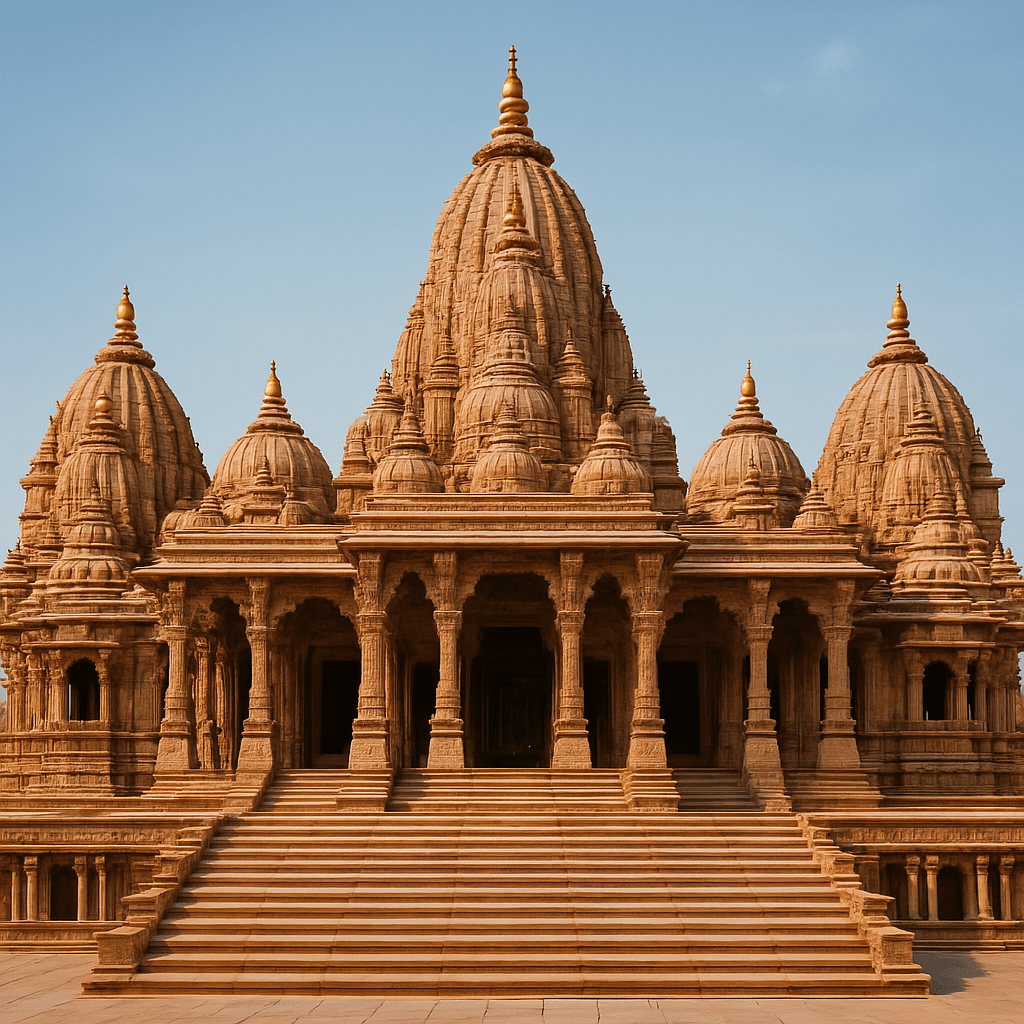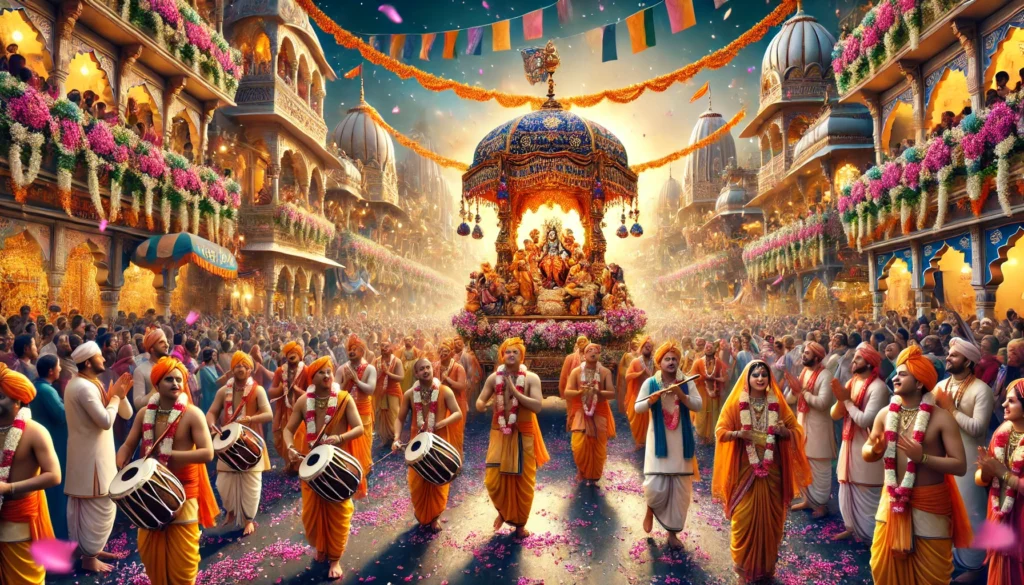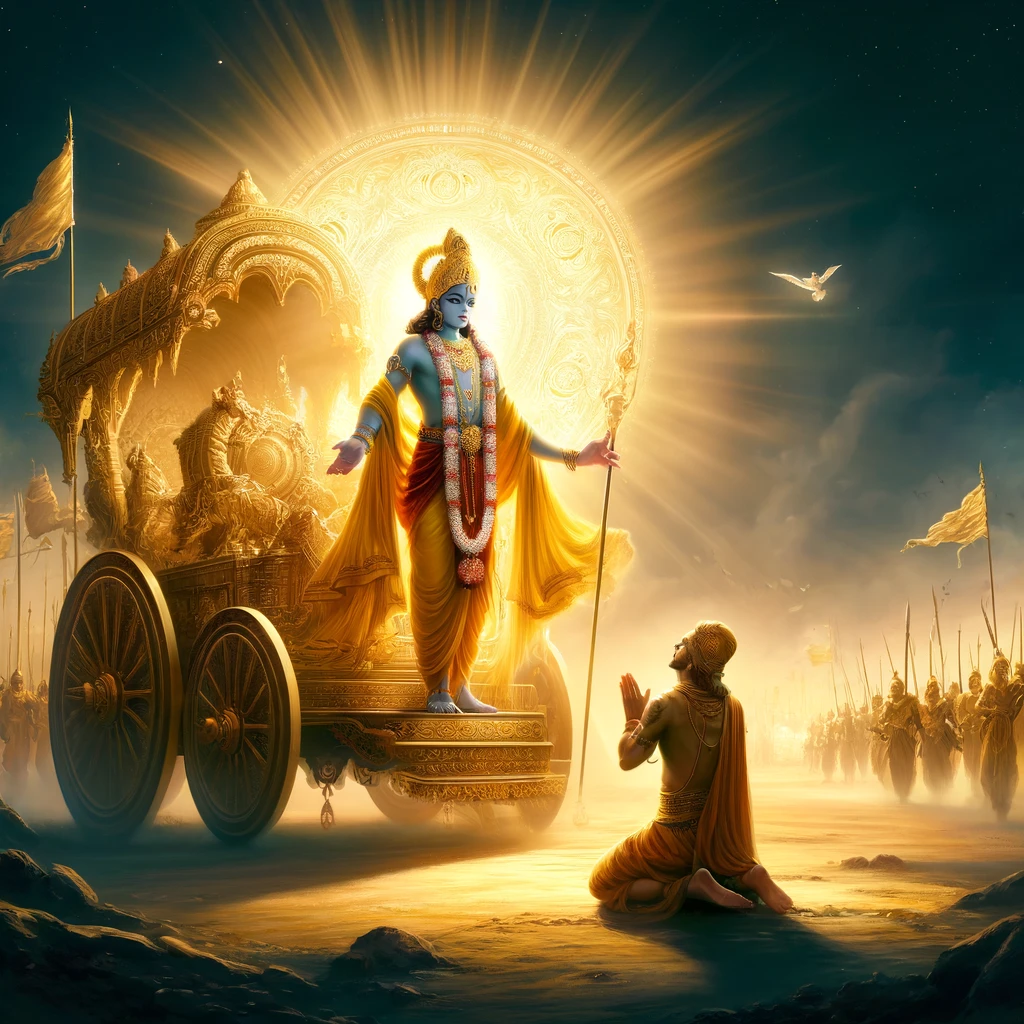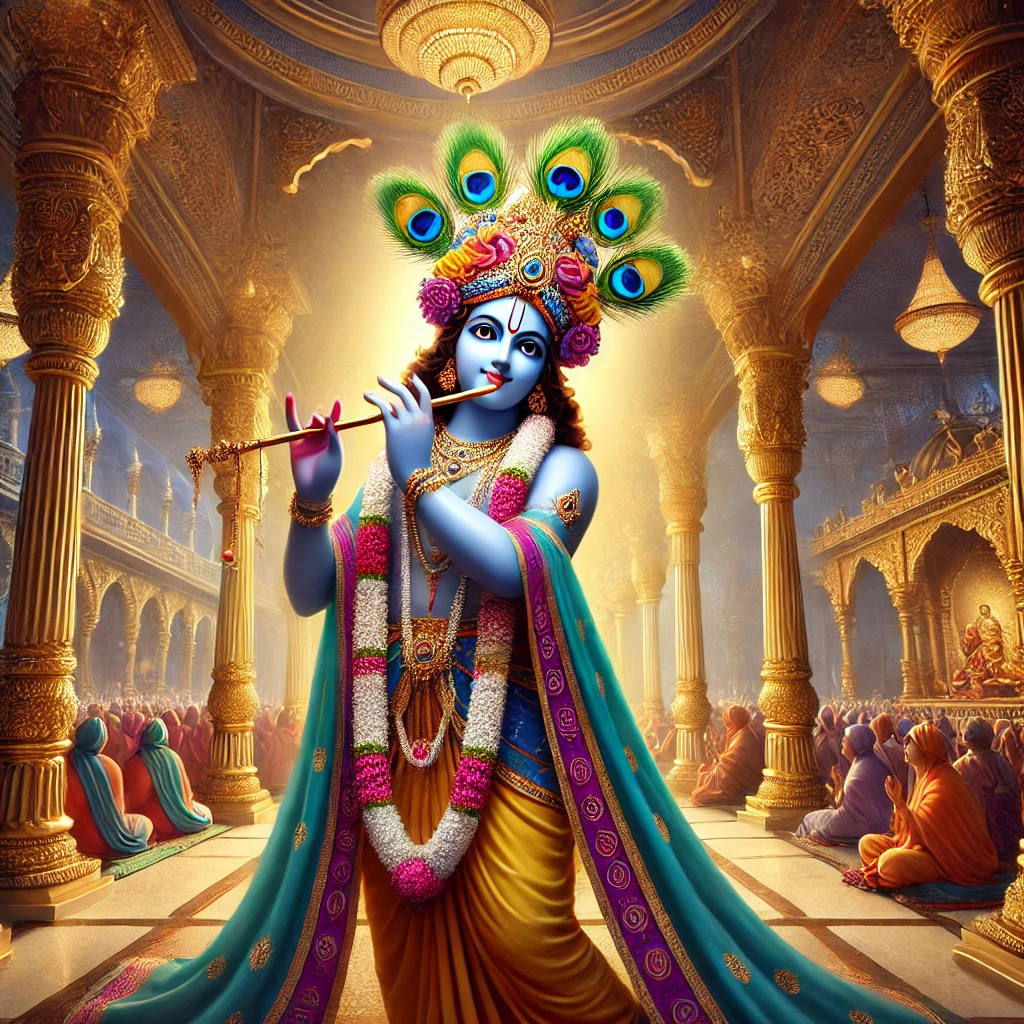Kartik and Dipavali
Celebrate Dipavali with us and also offer ghee lamp to the Lord during Kartik
Diwali is one of the most popular festivals in the Indian calendar. The anniversaries of many auspicious historical events comprise this ancient festival. The festivities comprise of firecrackers, ceremonial bathing, feasting, artis, family get-togethers – and illuminations.
The aesthetically appealing illumination dates back many millennia, to the time when the jubilant citizens of Ayodhya welcomed Lord Rama back to their city after His exile. The Ramayana describes how, when Lord Rama was exiled due to the misguided intrigues of Kaikeyi, Ayodhya became almost like a ghost city. All its citizens were plunged into an ocean of separation and sorrow for fourteen agonizingly long years. When Lord Rama finally returned, their heart’s innermost longing was at last fulfilled. They spontaneously celebrated this joyful reunion of divine love by illuminating their houses.

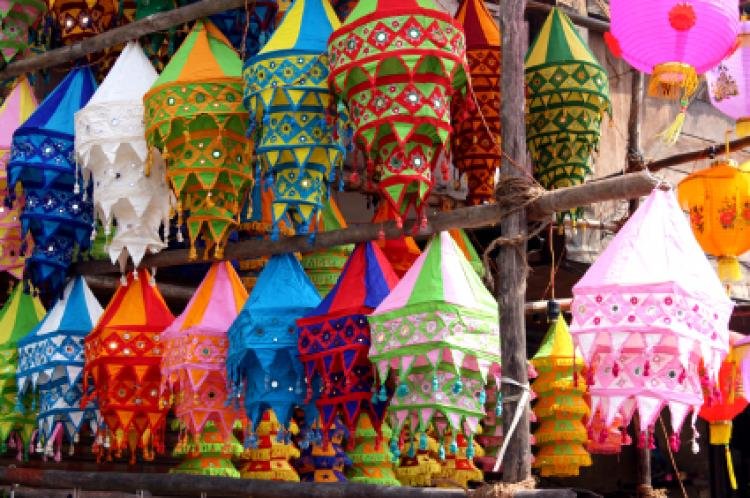
Traditionally in Vrindavan, this very merry festival is celebrated by cooking very large amounts of food offerings, which are then arranged in the form of Govardhan Hill. It is called Annakuta (Anna, meaning 'grains'; Kuta, meaning 'mountain') and takes place on the day after Diwali.
In ISKCON, devotees prepare unique offerings of halvah and sweets, beautifully arranged in a replica of Govardhan Hill. Sometimes, a Govardhan shila is placed atop the hill. Devotees jubilantly circumambulate the hill of sweets, worshiping it as Govardhan Hill itself. A sumptuous feast is served on the occasion.
Historically, the heart of Diwali lies not merely in the lighting of lamps, but in the joyous return of Lord Rama to Ayodhya after 14 years of exile—a moment that symbolized the triumph of good over evil, light over darkness, and the restoration of hope and dharma. The citizens of Ayodhya, overwhelmed with love and devotion, illuminated the entire city with rows of diyas to welcome their beloved Lord home, marking the very first Diwali. While lighting lamps is a beautiful tradition, the true essence of Diwali is much deeper. The Ramayana teaches us that Ayodhya’s joy was not in the lamps themselves, but in the fulfillment of their deepest longing: the Lord’s presence in their lives. In the same way, our celebration of Diwali remains incomplete if we restrict ourselves to external rituals without seeking to welcome the Lord back into our own hearts. To truly experience the essence of Diwali, we must reflect on the spiritual significance behind the festival. Just as the people of Ayodhya prepared for Rama’s return by cleaning their homes and hearts, we too can prepare ourselves by cleansing our minds of negativity, ego, and distractions. This means practicing introspection, cultivating virtues like compassion, humility, and truthfulness, and engaging in acts of devotion—such as prayer, kirtan, reading sacred texts like the Ramayana, and serving selflessly. Welcoming the Lord back into our hearts is about rekindling our relationship with Him through sincere devotion and righteous living. When we do so, the “light” of Diwali truly dispels the darkness within—replacing emptiness, anxiety, and restlessness with hope, joy, and love. Thus, the real celebration of Diwali is not just in lighting lamps, but in illuminating our hearts with the presence of the Divine, just as the people of Ayodhya did centuries ago.
Lord Rama answers in the Ramayana through His instructions, which inform us of our actual identity and purpose. We are all eternal spiritual beings, belonging to the kingdom of God, where we eternally enthrone the Lord as the king of our hearts and rejoice in selfless loving exchanges with Him. When we exile the Lord from our hearts, we exile ourselves from that world of endless love and come to this mortal world, where we misidentify ourselves with temporary material bodies. Covered by spiritual amnesia, we play illusory roles and pursue illusory goals, but get only disappointment and distress. Though we exile and forget the Lord, He never forgets us and never actually leaves our heart. He just becomes unmanifest to our vision and continues to accompany and guide us throughout all our adventures and misadventures in this world, eagerly waiting and inviting us back to His loving shelter. By cultivating knowledge from the sacred scriptures about the Lord and His love for us and reviving our dormant love for Him by chanting His holy names, we can invite Him back to our hearts. Therefore, while lighting the earthen lamps this Diwali, let us also light our heart with divine wisdom and love.

